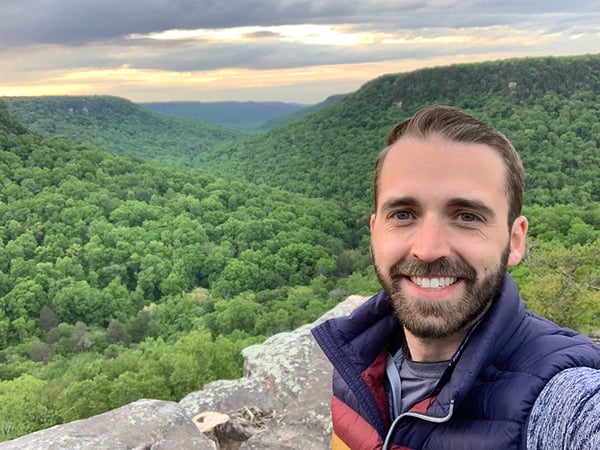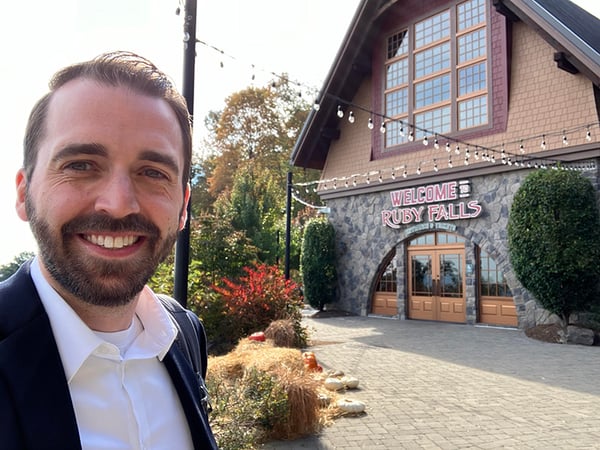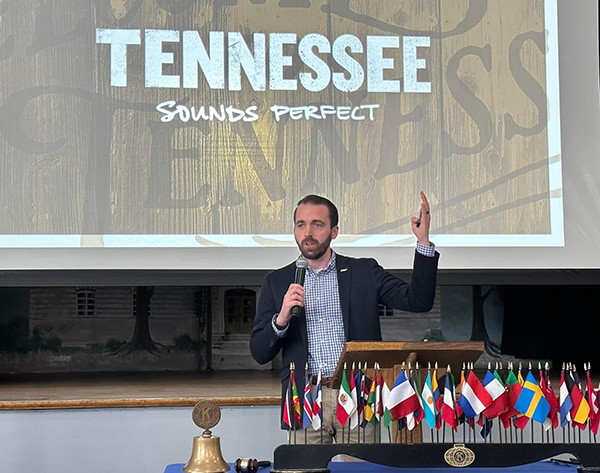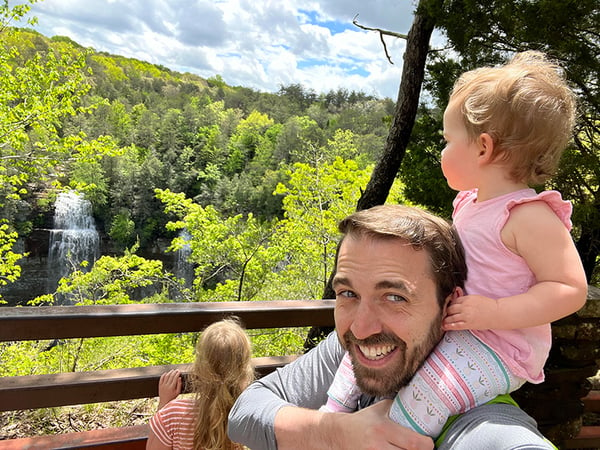Meet Josh Gibson: Tennessee’s Tourism Research Director
Josh Gibson has visited every one of Tennessee’s 57 state parks. A Memphis native, he became familiar with the diverse natural beauty of his home state when he was in college. Years later, he put this appreciation into a cover letter that landed him a position with the state park service. Today Josh is the research director for the Tennessee Department of Tourist Development and a new user of Zartico’s Destination Operating System®.
Keep reading to learn more about his career path, his inspirations, and what data problems he’s always thinking about.

Tell us about your career path — how did you get into the role you are in now?
How I got here was related mostly to my time with the state parks. I managed digital, websites, and social for the Tennessee state park system for about six years. I touched about 120 Facebook pages, Instagram accounts, and different things like that. I had oversight on the individual park accounts and then ran the branded state accounts as well.
I helped grow those, and then in 2020, the Department of Tourism got CARES funding, and they provided a portion of that to the state parks because that summer we all realized that state parks were going to be busier than ever before. We were able to use that funding and the expedited timelines that it had to help drive additional visitation.
I was responsible for online sales and reservations to our cabins, lodges, and campgrounds, and we had a lot of success there. That was really my first major interaction with the members of this department, and I built a relationship with Commissioner Mark Ezell and Assistant Commissioner Kevin Mahoney.
I left state parks and spent about a year doing Product Management at FedEx for customer notifications. Then there was a hole after my predecessor left this position, and Kevin and the commissioners thought I'd be a good fit. At the same time, I was feeling a void for the kind of mission-driven work I had been doing. In my private sector career, I've probably never been better compensated but less fulfilled. So this was an opportunity to get back into fulfilling mission-driven work with good people and in a state I love.

If you weren’t doing this work, what do you think you would be doing instead?
My wife and I have a joke from early on in our relationship — she worked at a snow cone stand, and I've always wanted to own a snow cone stand. So maybe I would do that!
I had this vision of serving snow cones in the summer and coffee in the winter. Who knows? I like food service, and I have some experience with it. So if money was not an object, and I could just do what I wanted to do, I would be quite happy serving plates of food.
Where do you go to learn or to find inspiration? Are there any people, books, podcasts, hobbies, etc. that are capturing your attention lately?
I listen to a lot of podcasts. I like Simon Sinek’s podcast, as well as his books. Pat Lencioni has the “At the Table” and “The Working Genius” podcasts that I listen to pretty religiously.
Product School puts out some good product management podcasts, and I feel like my time at FedEx really drove my appreciation for product and customer empathy and design thinking. Even though I don't manage now what would be considered a traditional product, in the IT sense, I try to bring those same approaches into my shepherding of research. So I find a lot of inspiration there listening to people from Google and other companies talk about how they approach product management.

Tell us about a place you love — what do you love about it, and what would you tell someone who is planning to visit for the first time?
My favorite place in Tennessee is Pickett CCC Memorial State Park. It's on the Upper Cumberland near the Kentucky line. I don't know that I've ever seen a place that has more interesting features — different mosses and things that grow on the side of the bluff faces, waterfalls, and big caves and outcroppings. There are so many different geological features, and the things that grow on the rock are all different hues of orange and purple and green. It's just a really vibrant place.
The park is full of rhododendron, so it's evergreen. Pretty much any time of the year it feels like you're in an almost tropical environment in the middle of Tennessee — even with snow on the ground. The hikes to the most iconic places are only maybe half a mile off the road, which makes them more accessible to more people.
It's one of those places that I've always tried to advocate for and push people toward, and then at the same time have always kind of regretted that in the sense that I’m pushing people to the place that I love and in some ways changing it. But I also love to see more people discover it.

What is your “bucket list” travel destination?
Sometimes I feel a bit ashamed as a park person that I’ve never been to Yosemite, so that’s on the list. And then outside of the States — I’ve always wanted to go to Europe. I grew up as a World War II kid — I just loved reading about it and playing video games. So if I could do anything, I would go from Normandy to Berlin following the Battle of the Bulge. I think that would be really nerdy and cool to see Europe through the eyes of WWII soldiers.
What feature or element of ZDOS® either sparks the best ‘aha moments,’ leads you down the best rabbit holes, or makes your job easier?
I really appreciate the special projects where you can visualize the movement of people over time. That seems relatively unique — being able to show how people move into a space, move out of a space, and move through space. I really like geospatial tools, and that kind of geospatial visualization is helpful because you may not see the pattern on paper until you realize, Oh all of these data points are actually clustered together.
I also love that ZDOS® is not just one thing. It's not just a spending tool. It's not just a geospatial tool and cell phone-driven movement tool. It’s the modeling of those two things against each other that creates unique opportunities to understand how people traveling from particular markets spend money. And we don’t just get that once a year in a visitor profile — we can focus on a concentrated period of time for an event or look at a particular city or particular location. There’s a granularity that I don’t have available through other tools. I’m still learning how to use that for insights, but I see big potential there.
What’s the biggest opportunity the industry is missing out on when it comes to data or technology?
I spend a lot of time thinking about our border. At the national level we have this idea of inbound and outbound travel, and I think about our border as an inbound outbound opportunity, too. What loss do we have of Tennesseans leaving and going and visiting other places? What is the potential value of that of outbound travel?
As the state tied for the most borders, what does it mean for us if we lose a visitor to North Georgia or Asheville or lower Kentucky or Alabama? What happens if they choose to recreate here, but then stay across the border? It means our impact is a fraction of what it could have been had we captured the lodging night.
So I try to understand not only what’s happening in our 95 counties, but also what’s happening in our vicinity. I feel like there aren’t yet as many tools focused on that.
Hear Josh share what he’s learned about measuring and influencing visitor movement at Zarticon this May. Zartico clients can register for free by April 19th.



